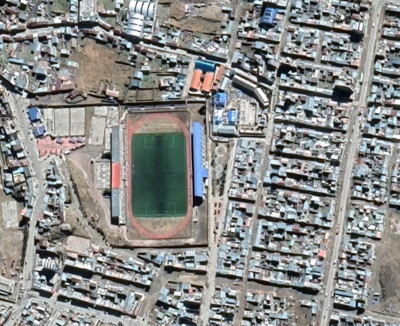
It might seem a somewhat incidental thing to discuss, but the height of a football stadium from an altitude point of view can make a massive difference to the players.
For those not used to playing at such heights, it’s similar to playing in extreme heat insomuch as it reduces the amount of running and high-pressing that players can do, which can obviously influence the result.
The extent to which hypoxia can affect players can be negated with altitude adjustment, which is why the players that are owned by the clubs that have grounds at such height are better at playing there than others.
The universal nature of football means that few things can make a big difference to matches, which is why we’re looking at the highest stadiums on this page.
| Stadium | Altitude* Meters (Feet) | Location | Local Team(s) |
|---|---|---|---|
| Estadio Daniel Alcides Carrión | 4,380 (14,370) | Cerro de Pasco, Peru | Unión Minas |
| Municipal Stadium of El Alto | 4,090 (13,419) | El Alto, Bolivia | Always Ready |
| Estadio Víctor Agustín Ugarte | 3,960 (12,992) | Potosí, Bolivia | Real Potosí and Nacional Potosí |
| Estadio Hernando Siles | 3,637 (11,932) | La Paz, Bolivia | Club Bolivar, The Strongest and La Paz F.C |
* Altitude above sea level
Estadio Daniel Alcides Carrión
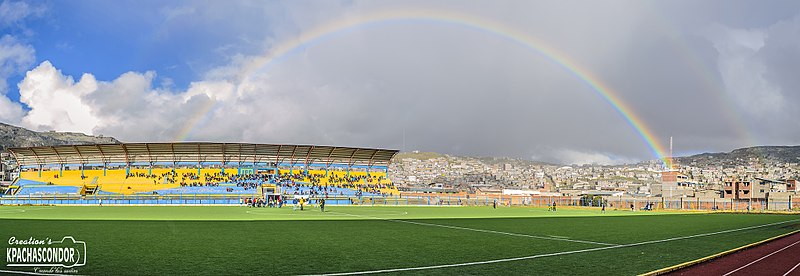
The highest football stadium in the world is the Estadio Daniel Alcides Carrión, which can be found in the city of Cerro de Pasco, Peru. Located at the top of the Andean mountains, Cerro de Pasco is the capital of the Pasco region and has a population of around 60,000. It is one of the highest cities in the world, which explains why the stadium is also one of the highest.
La Rinconada, also in Peru, is actually the highest city in the world according to National Geographic. It’s fair to say, then, that Peruvians are used to doing things at a crazy altitude. At 14,232 feet above sea level, Cerro de Pasco is high enough to mean that players definitely need to engage in a bit of altitude adjustment before kicking a ball.
Cerro de Pasco earned its riches from silver when the precious metal was found in the area in 1630. That also helps to explain the name of the football team that plies its trade there: Unión Minas. The stadium has enough room for 8,000 supporters and boasts an altitude of 13,973 feet above sea level. That’s what makes it the highest in the world.
Named after the Peruvian medical student who himself gave his name of Carrion’s Disease, Estadio Daniel Alcides Carrión has been the sight of controversy in the past. In May 2007, for example, the governing body of international football, FIFA, banned international matches from being played above 8,200 feet from sea level. The ban was revoked in 2008.
Municipal Stadium of El Alto
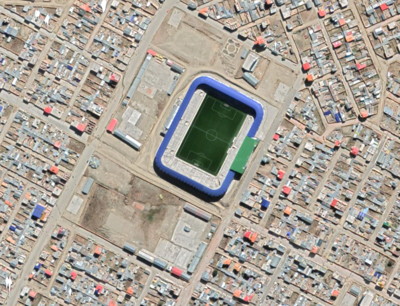
The Municipal Stadium of El Alto, which is also known by the title of Villa Ingenio Stadium, is located in the Bolivian city of El Alto. That means that it is in the Murillo Province of the Department of La Paz, where another high up football stadium is also located. It can be found in the Villa Ingenio area of Bolivia’s second-largest city.
It meets with the standard to be a host venue for competitions organised both by FIFA and by the South American Football Confederation, CONMEBOL. Bolivian Primera Division club Always Ready plays its league matches at the ground, the building of which was partly subsidised by the Bolivian government to the tune of around £6.5 million.
The President of Always Ready at the time that the stadium was opened, Fernando Costa, said that the very building of the new ground saw several different factions in the region uniting for a common purpose. The central government, the municipality of El Alto and the neighbourhood councils all came together for the good of football in the region.
Work began on the new stadium in 2013 and was completed four years later. The President of Bolivia, Evo Morales Ayma, inaugurated it on the 16th of July in 2017 before a game was played between Bolivar and The Strongest. The Club Deportivo FATIC team also uses the ground as its home stadium alongside Always Ready.
Estadio Víctor Agustín Ugarte
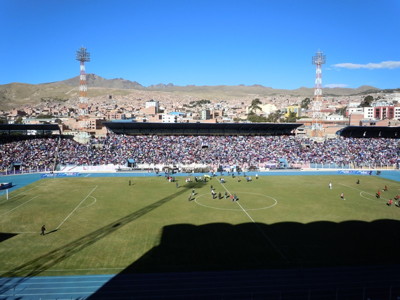
The third-highest stadium in the world is located in the South American country of Bolivia. Estadio Víctor Agustín Ugarte, also often referred to by its older name of Estadio Mario Mercado Vaca Guzmán, can be found in the Bolivian city of Potosí. It is the second-highest football stadium in the world with a capacity of over 10,000, given that it has enough space to fit 32,000 people through its doors.
Mostly used for football match of local clubs Real Potosí and Nacional Potosí, it is actually a multi-purpose venue. It opened its doors in 1992 and bore the moniker of Estadio San Clemente, renamed in 2000 to become the Mario Mercado Vaca Guzmán. That renaming occurred after the structure of the place was altered, essentially making it a different stadium and therefore needing a new name.
It had been expanded in 1997, which saw its capacity lift to 13,000. When the host club qualified for the Copa Libertadores and the Copa Sudamericana in 2007, it was decided that it should expand further in order to cope with the expected crowds. The South Bend was doubled in size, as was the North Bend and certain other sections, giving it its current capacity of 32,000.
When the stadium re-opened after the expansion it was named the Estadio Víctor Agustín Ugarte after one of Bolivia’s most famous footballers. The location of the stadium at 12,992 feet above sea level means that players who have not been in the area for a fortnight or longer struggle to adapt to the lack of oxygen. This means that the home team gets a massive advantage over visiting teams from elsewhere in South America.
Estadio Hernando Siles
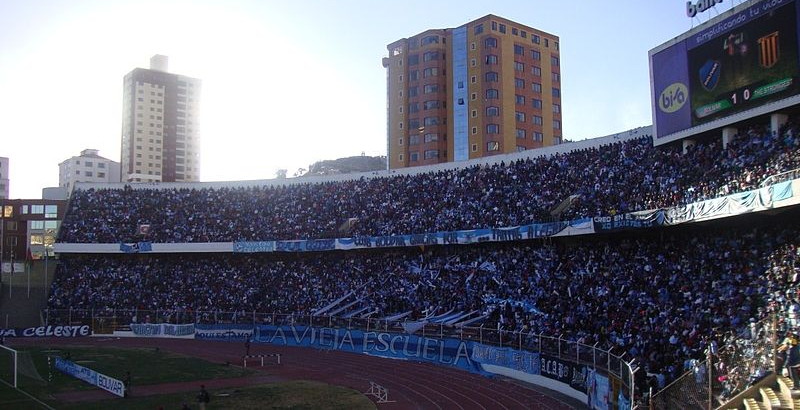
Located in La Paz, Bolivia, Estadio Hernando Siles is the largest sports stadium in the country. It has a capacity of 41,143 and is named in honour of the 31st President of Bolivia. Located in Miraflores, it opened its doors for the first time in 1931 when The Strongest defeated Universitario 4-1.
Theree of Bolivia’s biggest clubs call the venue their home ground, with Club Bolivar, The Strongest and La Paz F.C. all using the venue alongside some smaller, lesser-known teams. Bolivia hosted Brazil in the Group 2 qualifiers for the 1994 World Cup at the stadium, famously defeating them 2-0 and handing the Samba boys their first qualifying defeat for 40 years.
A similarly historic event occurred in 2009 when Bolivia defeated Argentina 6-1 at Estadio Hernando Siles. It was Argentina’s worst defeat in 60 years of competitive football. Six months later, Brazil were again on the receiving end of shock defeat when Bolivia beat them 2-1 in the same World Cup qualifying group ahead of the 2010 tournament.
Consistent complaints from national sides that use of the venue as a ground to host football matches eventually led to FIFA introducing a ban on stadiums above 8,200 feet sea level being used for their competitions. The argument from numerous people, including Diego Maradona, was that this discriminated against countries with high altitudes and removed their natural advantage.
